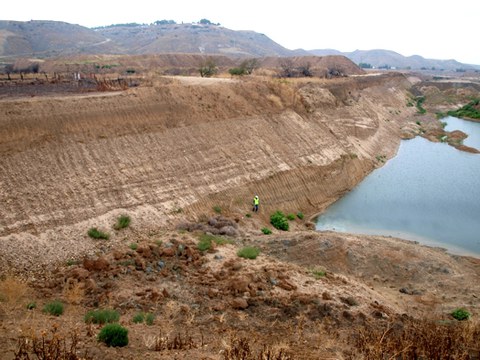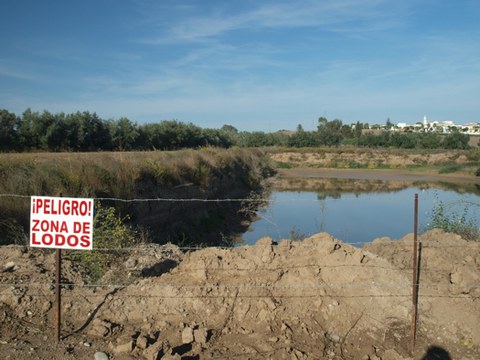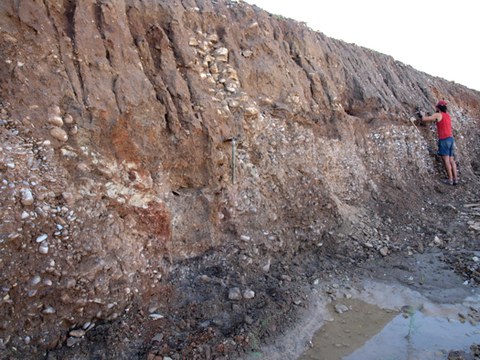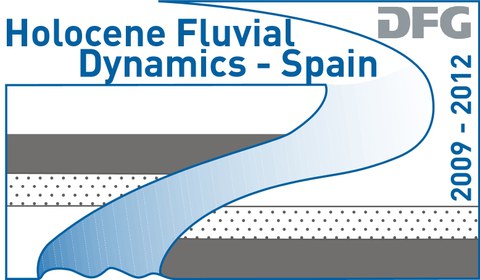DFG-Projekt Fluviale Archive Spanien
Die Bedeutung fluvialer Archive für die Rekonstruktion spätpleistozäner und holozäner Umweltbedingungen in Spanien
Zur Rekonstruktion der Umweltbedingungen der letzten 15.000 Jahre in Spanien eignen sich Flussauensedimente, die durch ihre unterschiedliche Zusammensetzung und Schichtung wichtige paläogeographische Informationen liefern. Ziel des Projektes ist es, an den Flüssen Rio Jarama in Mittelspanien und Rio Guadalete in Südspanien Flussauenprofile systematisch aufzunehmen, zu bearbeiten und auszuwerten, um die spätpleistozäne und holozäne Flussgeschichte mit einer gut abgesicherten chronologischen Auflösung zu erforschen. Aufgrund der zu erwartenden Kopplung der holozänen Dynamik an die nordatlantischen Zirkulationsmuster, nehmen Mittel- und Südspanien eine Schlüsselposition für den gesamten Westmediterranraum ein. Anhand der gewonnenen Ergebnisse sollen regionale Muster der fluvialen Morphodynamik für Mittel- sowie Südspanien modelliert werden, um diese in einer vergleichenden Betrachtung einander gegenüber zu stellen und zudem mit anderen Archivstudien abzugleichen. Damit soll eine, vor allem für das Zeitfenster zwischen 15.000 und 3.000 Jahren bestehende Forschungslücke geschlossen werden.
Gefördert durch DFG (2009-2012)
Kontakt:
Daniel Wolf
The importance of fluvial archives for the reconstruction of late Pleistocene and Holocene environmental conditions in Spain
Floodplain sediments are highly suitable to reconstruct palaeoenvironmental conditions in Spain for a timeframe of the last 15.000 years. Due to different composition and layering, these sediments provide valuable palaeogeographical information. Aim of the project is to systematically study fluvial sediment records in central Spain (Jarama River) and southwestern Spain (Guadalete River) to explore the late Pleistocene and Holocene fluvial history with a reliable chronological resolution. Because of the expected coupling of Holocene dynamics to North Atlantic circulation patterns, central and southwestern Spain are holding a key position for the whole Western Mediterranean realm. With the help of the obtained results, regional fluvial dynamic patterns shall be modelled for central and southwestern Spain in order to bring them together and to compare them to different archive studies. This is intended to close a current research gap especially for the timeframe between 15.000 and 3.000 years before present.
Funded by DFG (2009-2012)
Contact:
Daniel Wolf
References
Wolf, D., Faust, D. (2016): River braiding caused by rapid floodplain deformation - Insights from Holocene dynamics of the Jarama River in central Spain. Quaternary International, in press.
Wolf, D., Faust, D. (2015): Western Mediterranean environmental changes: Evidences from fluvial archives. Quaternary Science Reviews 122, 30-50.
Wolf, D., Seim, A., Faust, D. (2014): Fluvial system response to external forcing and human impact - Late Pleistocene and Holocene fluvial dynamics of the lower Guadalete River in western Andalucía (Spain). Boreas 43, 422-449.
Wolf, D., Seim, A., Diaz del Olmo, F., Faust, D. (2013): Late Quaternary fluvial dynamics of the Jarama River in central Spain. Quaternary International 302, 20-41.





